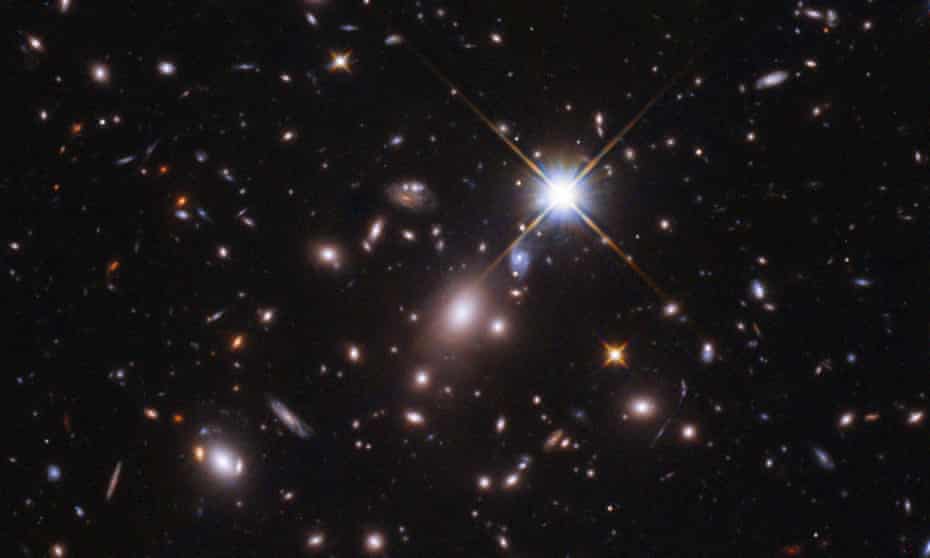Extract from The Guardian
Light from Earendel has travelled for an estimated 12.9bn years to reach Earth.

Thu 31 Mar 2022 03.44 AEDT
Last modified on Thu 31 Mar 2022 04.56 AEDTLight from the star, named Earendel, has travelled an estimated 12.9bn years to reach the Earth – a huge leap from the previous most distant star, which dates to nine billion years. The observations were possible thanks to a rare cosmic alignment, meaning that Earendel may be the only individual star from this epoch that we will ever see.
“We almost didn’t believe it at first, it was so much farther than the previous most distant star,” said Brian Welch, an astronomy PhD student from Johns Hopkins University and lead author of the paper. “Studying Earendel will be a window into an era of the universe that we are unfamiliar with, but that led to everything we know.”
Prof Colin Norman, an astrophysicist at Johns Hopkins University, who was not involved in the findings, said: “This is a remarkable pioneering discovery that opens up a completely new region of discovery and enables massive stars to be directly observed when the universe was young and star formation was recently initiated.”

Scientists estimate that Earendel, whose name means “morning star” in Old English, is at least 50 times the mass of the Sun and millions of times as bright, placing it among the most massive stars known. But even such a brilliant star would not normally be detectable. At such vast distances, even an entire galaxy is just a smudge of light.
It was only thanks to natural magnification by a huge galaxy cluster, WHL0137-08, which sits between us and Earendel, that astronomers were able to make the detection. The cluster’s gravitational pull is so intense that light bends around it, creating a powerful cosmic magnifying glass that amplifies light from distant objects lying behind it.
The star’s distance was estimated by its colour. Light is “red-shifted” away from its original wavelength as it travels through the expanding universe and so, although Earendel would have been blue if seen from nearby, 12.9bn years ago, it appears a deep red in the Hubble images.
The observations have been hailed as hugely significant and been prioritised for the first cycle of observations using Nasa’s James Webb Space Telescope, due to begin in June. This will allow scientists to definitively confirm that they are looking at a single, very distant star. An alternative possibility, deemed very unlikely, is that it is a dim, nearby brown dwarf.
The planned observations will also allow astronomers to measure the star’s brightness and temperature and give insights into the composition of the earliest generation of stars. These stars – the ancestors of those we see in the sky today – formed before the universe was filled with the heavy elements produced by successive generations of massive stars. There are theoretical predictions, but no direct evidence, of an early generation of stars made only of primordial hydrogen and helium.
“[These stars] produce the first supernovae that enrich the galaxies with metals and elements such as carbon and oxygen that are necessary for life,” said Norman. “These stars are also responsible for injecting energy into the turbulent medium from which stars and galaxies are forming.”
The findings are published in the journal Nature.
No comments:
Post a Comment